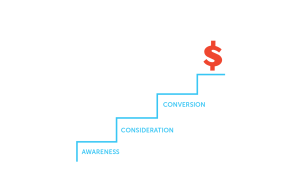Clean data. It’s on everyone’s list, but do you know how to get it? And what separates data from good data?
Consolidating your data is a huge step forward, but how do you know if it’s completely ready to power your marketing? If it’s clean, you can proceed. Clean data turns your CRM, reporting tools, and predictive models into growth engines. Messy data, on the other hand, leads to wasted marketing spend, inaccurate targeting, and bad decisions, among other frustrations. It’s the old GIGO adage – garbage in equals garbage out. When you start with clean data, you’re setting yourself up for marketing success.
Related: First- and Third-Party Data for the Win
So how do you get your data squeaky clean? It’s a lot like clean eating. Imagine you’re making a smoothie. If you toss in fresh fruit, quality protein, and the right balance of nutrients, you get a delicious, energy-boosting drink. But if you add mystery ingredients from the back of your fridge and ultra-processed food, you might end up with something that tastes awful and makes you sick. Data works the same way. Good data drives great results; bad data derails them.
What Is Clean Data?
Clean data is accurate, consistent, and reliable information you can trust to inform your marketing decisions. If your CRM is filled with bad data like duplicate contacts, outdated emails, and inconsistent formatting, your campaigns, insights, and ROI will suffer. Keep your data properly maintained, and it becomes a marketing powerhouse, like that smoothie packed with clean protein.
Related: Do You Know Where Your Data Is?
5 Reliable Data Qualities You Can Trust
Look for these specific characteristics when assessing your data:
- Accuracy
Does this data reflect the reality of your customers, leads, and locations? If your database is riddled with typos, incorrect contact information, or miscategorized leads, you’re not working with reality. Accurate and reliable data ensures that your marketing and sales teams engage the right people with the right messages. So take the time (it’s well worth it) to investigate all your information and ensure that it’s correct. - Completeness
Are all the necessary fields filled out? This seems like a simple thing, but if your CRM is full of partial addresses, missing phone numbers, or leads with just a first name, you’re working with an incomplete, inaccurate picture – it’s “garbage in” again. Incomplete data leads to missed opportunities and inefficient segmentation. Make sure to fill everything out completely. - Consistency
It’s one of our mantras: consistency is key. This holds true for marketing as well as data wrangling. Is the data entered in the same way across all locations? If one location logs “John Dorchester,” another logs “Dorchester, John,” and a third simply uses “JD,” your system won’t be able to recognize that these all refer to the same customer. Without consistency, merging, sorting, and analyzing data quickly becomes a name and numerical nightmare. Standardized data entry rules ensure that your information remains usable at scale. - Timeliness
We all know that time moves too fast, and things are always changing. Is your data up to date, or are you basing decisions on information from a year ago? Old contact details, inactive accounts, and outdated preferences can lead to wasted marketing spend and lost sales opportunities. Keeping your data fresh ensures that you’re always engaging with relevant audiences. - Uniqueness
Here’s an interesting point to consider: What are the unique traits and insights your business truly needs? Spoiler: It isn’t everything. Too much data can be just as problematic as too little. Focus on capturing the information that matters most to your business, whether that’s customer preferences, purchase history, or engagement trends. Otherwise, you can quickly lose yourself in an ocean of information, and any insights will be swallowed up by sheer data volume!
Related: Are You Collecting the Right Data From Your Website Visitors?
Why Clean Data Is Critical for Multi-Location and Franchise Marketing
We’ve seen that bad data leads to bad decisions. If your CRM, website analytics, e-commerce platform, or the data collected from social or surveys is a mess, you might double-market to the same customer, send promotions to outdated addresses, or completely miss key market trends. How embarrassing (and expensive)! Looking to future campaigns, predictive models and analytics also rely on reliable data patterns – and bad data obscures those patterns.
Multi-location and franchise businesses face even greater risks. A small inconsistency in one store’s database might not seem like a big deal, but when multiplied across dozens or hundreds of locations, these errors compound into major problems. Standardized data management across locations ensures consistency and accuracy at scale.
How to Start Cleaning Your Data
If you haven’t already cleaned up your act, start here. Maintaining a clean CRM, website and social analytics, accurate e-commerce data, and reliable survey assessments isn’t a one-time achievement – it’s an ongoing process. Here’s how to get organized:
- Clean first: Follow the steps above to be sure that you’re starting with a clean data slate.
- Revisit your CRM implementation plan: If you haven’t yet set up a solid CRM, check out our previous article.
- Standardize: This is exceedingly important for multi-location and franchise businesses. When all locations follow the same guidelines for inputting data, it’s ready for the next step, which will integrate the data sets smoothly.
- Establish data entry protocols: Train your team to enter and manage data correctly, ensuring consistency across all locations.
- Audit and clean location-specific data: If you operate multiple branches, ensure that each location follows the same data hygiene standards to maintain uniformity.
Learn more here: Standardizing Data: A Crucial First Step for Multi-Location Marketing
- Consolidate: By blending the data sets together, you’ve effectively combined all multi-location and franchisee data.
Learn more here: Consolidating Data: A Crucial Second Step for Multi-Location Marketing
- Monitor and Maintain: Stay on top of your data! Automate reports that flag outdated or inconsistent entries so that you can fix them before they snowball into bigger issues.
What’s Next: Putting Your Data to Work
Now that your data is consolidated and clean, you’re ready for the fun part – turning it into smarter marketing with predictive analytics. With reliable data, AI-driven insights, automation, and personalization become much more powerful. Instead of guessing, you can let your data guide you toward the right customers, at the right time, with the right message.
Partnering With Experts
Data quality isn’t a one-and-done task. Keeping your data clean and actionable requires ongoing maintenance and expertise. Working with a data-driven agency that is well-versed in multi-location and franchise marketing can help you build long-term data processes that fuel smarter marketing, stronger customer relationships, and sustainable growth. Let’s put your clean data to work and turn it into a powerhouse.



